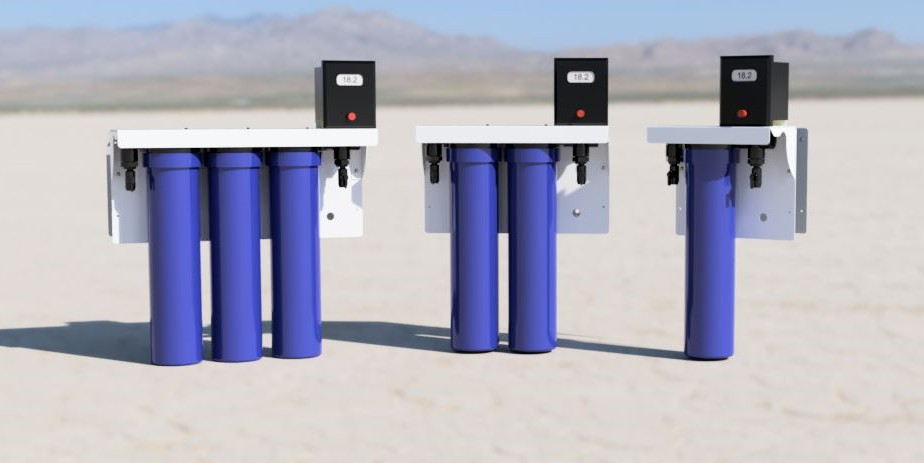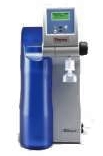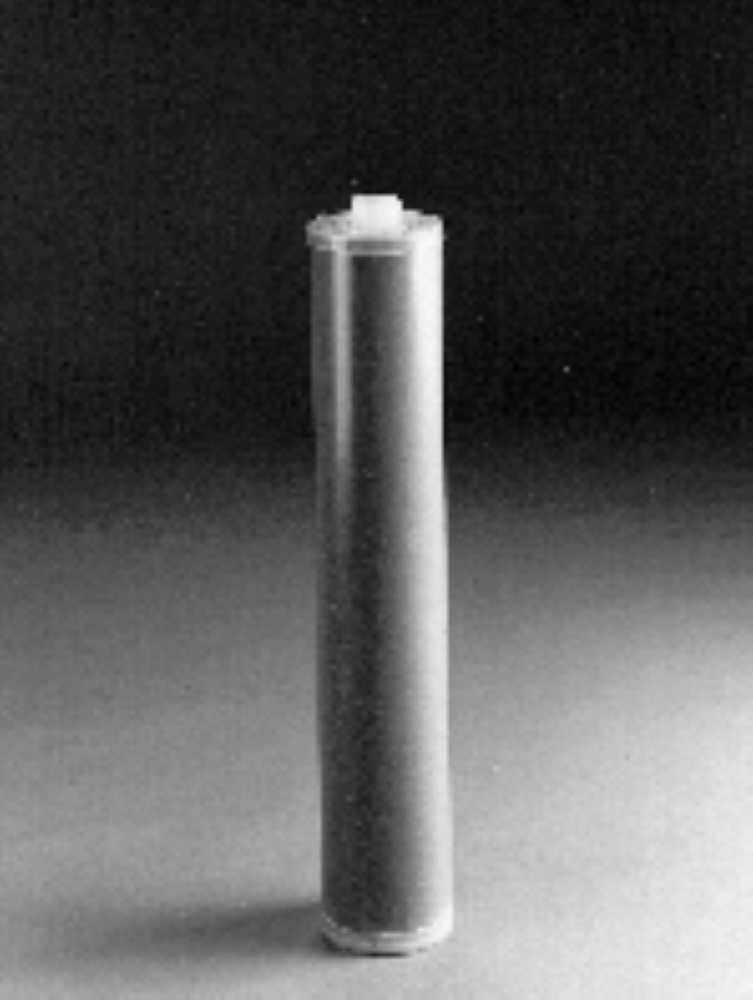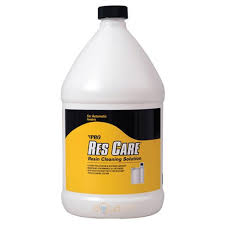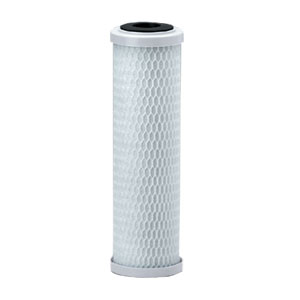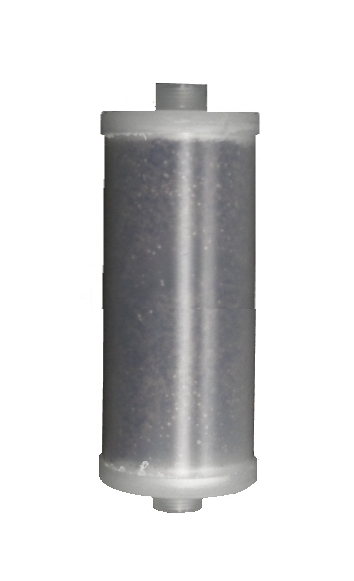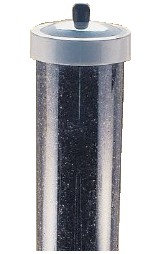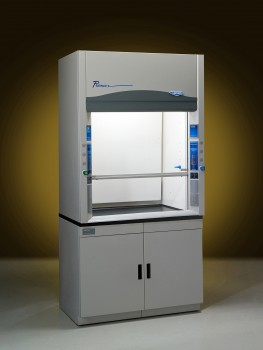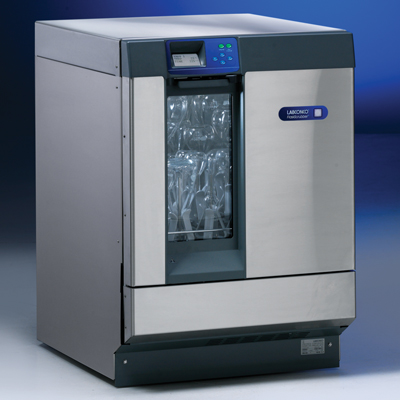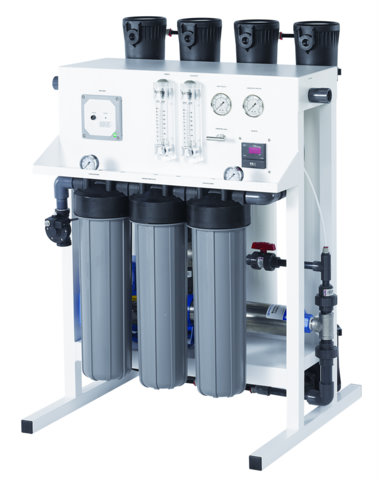How to determine correct ratio of chemicals to treat a spa or pool
Because a swimming pool system begins as a hole in the ground, without any water movement, it is an artificial structure. Consequently, it lacks the three purifiers that protect water quality in natural bodies of water:
1. Aeration - This is the addition of oxygen to the water, and results from the continual flow of water through lakes, streams and rivers.
2. Dilution of sediment - This is exactly what it sounds like, and also results from continual water flow.
3. Prevention of contaminant buildup - This happens when water flow causes movement and dilution, while aquatic organisms contribute to a process of biodegradation.
Since any pool lacks these purifiers, it’s subject to rapid stagnation. In addition, it’s also generally contaminated with bacteria, algae, and organic materials from swimmers wastes. (Did you know that an active bather produces up to two pints of perspiration per hour?) Add dust and dirt, and you get plenty of ways for a pool to go bad.
The world’s fanciest physical treatment facilities alone won’t keep a pool from getting gunked up. So let’s look at the obvious: a swimming pool must be disinfected.
These disinfectants must remove bacteria, algae and organic contaminants. They have to improve water clarity and color. And they have to work together as a total system, so everything functions well.
Enter the hero. Namely,CHEMICALS. More specifically, chlorine. Most pools in the U.S. use it in one form or another.
Why? Well, when chlorine compounds are dissolved in water, hypochlorous acid is formed. (Remember that name--it does the actual sanitizing.)
In most cases, the non-chlorine part of the chlorine compound serves no other purpose than to hold the chlorine until the product dissolves. You’ll notice we said in most cases.
Lets get more specific. There are three categories of sanitizers:
Chlorine gas at 100% available chlorine…
Inorganic hypochlorites such as calcium hypochlorite (now marketed at 65% available chlorine) and sodium hypochlorite (liquid bleach, at 10-15% available chlorine).
And finally, the chlorinated isocyanurates like granular (at 56% available chlorine) and tablets (at 90% available chlorine).
Secondary chemical treatment with substances that control pH and buffer the pool, is also needed for healthful swimming. Depending on pool conditions, secondary treatment might include decolorizers, additional algaecide, and chemicals to adjust mineral levels (hardness) or retard evaporation.
WHAT YOU USE IS WHAT YOU GET
We can begin by saying that all three sanitizers are compatible and effective with other chemicals in pool water. (Let’s be fair.) Each will perform its function without causing objectionable tastes, odors or colors in the water - if properly applied.
1. CHLORINE GAS… reacts with water to form hypochlorous acid, the active sanitizing species, plus hydrogen ion (H_) and chloride ion (Cl -). Hypochlouous acid exists in a pH dependent equilibrium with hypochlorite ion (OCI -) in pool water.
Now let’s look at the nuts - and - bolts. Chlorine’s major advantage is its relative low cost. Many large pools and most bulk drinking and waste water treatment systems use it for this reason.
Chlorine also has several disadvantages. It’s a gas that must be delivered in bulky metal cylinders. It has to be applied to the water through sophisticated metering systems operated by trained personnel. And it’s highly corrosive, toxic, and very acidic - due to the H_ and CI - (muriatic acid), the byproduct of its reaction with water.
Most regulated pools are required to install separate feeding equipment to add approximately 1.25 pounds of soda ash to neutralize the acidity of one pound of chlorine gas.
If chlorine gas were the only chemical available to disinfect water, it’s very likely that there would be no home swimming pools. Probably no swimming pool industry, either. The complexities and the hazards of this chemical are simply beyond the capabilities of the average pool owner.
Fortunately, more convenient methods of chlorinating pool water have been developed. We move on.
2. THE INORGANIC HYPOCHLORITES… also react with pool water to produce hypochlorous acid, the major disinfectant in chlorine. The hypochlorites are available as the granular calcium hypochlorite (@65% av. Cl.) and liquid sodium hypochlorite (NaOCI) (@9-15% av. Cl.)
Both forms can easily be added in the proper dosage for virtually any size pool. They’re relatively inexpensive. However, both forms have a high pH, and may require frequent additions of acid to maintain pool water in the proper pH range for chlorine efficiency, equipment longevity and bather comfort. Otherwise they tend to eat up pools… a big problem.
Calcium hypochlorite, with a pH of 10-12, also contains 5-8% of insoluble material, which can cause cloudy water. A by-product of this reaction is the calcium ion (Ca__), a major component of water hardness, and a contributor to scaling tendencies in the pool.
Sodium hypochlorite, with a pH of 12-14 is relatively low in available chlorine concentration. Therefore, more is required to maintain the disinfectant residual in a pool. Because of the bulk of its liquid form and its poor storage stability, it must be purchased frequently throughout the pool season. Although it does not add hardness to the pool, its high pH can contribute to scaling tendencies in hard water areas.
Neither product provides protection against the destructive effects of sunlight on a chlorine residual. That’s why more frequent chemical additions and adjustments are necessary to maintain satisfactory water quality.
And so, friends, we move on to number three.
3. THE POOL CHLORINATING CONCENTRATES… provide the effectiveness of HOCI, the ease and convenience of concentrated solids, and the benefits of stabilization, to provide outstanding water quality with minimum effort and expense. In case you didn’t know. Actually, granular reacts with water to produce the same active sanitizing species, hypochlorous acid. Therefore, it is an effective bactericide and algaecide that will oxidize organic contaminants. Tablets react similarly, but produce three units of hypochlorous acid.
Both the granular and tablets have a by-product known as cyanuric acid (remember that name!) which is the only known chemical that stabilizes a free chlorine residual without interfering with its sanitizing effectiveness. (Don’t panic, we’ll talk about free chlorine later. Suffice it is to say that free chlorine is the amount of chlorine available to do its job of sanitizing the water.)
A look at the physical and chemical properties of the pool chlorinating concentrates will help to explain their advantages.
Both the granular and the tablets are based on cyanuric acid, the central structure composed of alternating carbon and nitrogen atoms.
In the granular two atoms of chlorine are added, giving an available chlorine of 56%. Because this is a sodium salt, it has excellent solubility @ 26.1% and a nearly neutral pH of 6.7. It may be added directly to the pool by hand broadcasting. Or, it can be pre-dissolved and added as a hypo chlorinator solution.
The tablet contains three atoms of chlorine, giving it 90% av. Cl. It has a relatively low pH of 2 -3. Because of its high available chlorine content, much less needs to be added. So it, too, has a minimal impact on pH. Its low solubility of 1.2% makes it an ideal candidate for tabletting and use in continuous feeding systems.
We strongly recommend that this trichloro product not be added directly to the pool in either its tabletted or granular form. Its high available chlorine, slow solubility and acidic pH give it the potential to bleach, etch or pit any pool surfaces that it contacts.
Both products are free of insoluble residues, produce a minimal impact on pH and do not contribute to water hardness or scaling. After the chlorine has been consumed in performing the sanitizing functions, the cyanuric acid remains dissolved in the water to provide maximum stabilization for the free chlorine residual.
Exactly what is chlorine residual? Good question.
When chlorine is added to water in a newly filled pool, some of it is consumed in the process of destroying algae, bacteria and other oxidizible material in the water.
The amount of chlorine consumed in this process is referred to as the chlorine demand of the water.
Once the chlorine demand is satisfied, any additional chlorine added is referred to as chlorine residual. Not too complicated, eh?
Two types of chlorine residual can exist:
Free chlorine residual-this is a chlorine available to do its job of sanitizing the water.
Combined chlorine residual-this is chlorine combined with simple nitrogen compounds such as ammonia and urea. This chlorine (or chloramine) is non-effective as a sanitizer compared to free available chlorine.
It’s essential to maintain a free-chlorine residual at all times to achieve sparkling clear, sanitary pool water. This is accomplished by periodic super chlorination of the pool water. (More on that later). Super chlorination consists of simply adding a larger than normal dosage of chlorine to burn out nitrogenous materials.
When chloramines are removed, better efficiency of chlorine is achieved. More of the chlorine residual can then exist as the free or active form, rather than as the less effective combined form.
Alright, we’ve talked about stabilization. What is it? Also a good question.
By now, you should know that cyanuric acid reduces chlorine consumption. The benefits of using it for stabilization have been established and repeatedly verified since the concept was patented by FMC Corp. That’s right patented! The biggest problem with chlorine is that it breaks down and dissipates very easily under the sun’s radiation. In 1958, FMC Corp. conceived, developed and patented a way of stabilizing pool chlorine by using cyanuric acid. Numerous field tests and evaluations have demonstrated that the addition of a minimum of 30 parts per million of cyanuric acid to swimming pool water prevents wasteful destruction of the free chlorine residual by sunlight. In the stabilization process, a portion of the chlorine residual is temporarily bonded to the cyanuric acid molecule. Consequently, it’s protected from the destructive effects of sunlight. The nature of this bond is such that the chlorine demand is imposed upon the system and continues to be released as long as a demand exists. The role of chlorine in pool water sanitizing and the process of stabilization can be better understood when considered as part of a generalized pool chemical reaction.
In swimming pool waters, the free chlorine - HOCI - may be consumed in several ways:
By destroying bacteria and algae introduced by swimmers and by wind and rain borne contamination.
By reacting with reduced metals such as Fe__ to produce the oxidized Fe___ and chlorine ions.
By the action of the ultraviolet energy of sunlight, which converts free available chlorine to the inactive chloride ion.
By oxidizing nitrogenous compounds such as ammonia (NH 3) and urea introduced into the water as components of perspiration, urine and other bodily excretions.
MAINTENANCE OF FREE AVAILABLE CHLORINE RESIDUAL
Recommended level: 1 ppm to 3 ppm of free available chlorine
Ok, we’ve heard about sanitizers. They sound good. But how are you convinced? Simple. By this side-by-side test….
Pre-conditioning the pool with 30ppm of conditioner, and using a sanitizer to maintain that minimum, automatically provides protection for a pool against the effects of sunlight. The benefits of this system of pool treatment are best illustrated in comparative tests of chemical consumption. In this test, the effects of sunlight on pools treated once a day is dramatically demonstrated.
Identical 5000 gallon pools, located side by side to eliminate variations in climatic exposure, were monitored over a period of several days.
In an unstabilized pool, an inorganic hypochlorite was added at the label directed dose of 4 ppm FAC (84gm/3 oz.). The other pool was stabilized and treated with stabilized granular (NaDDC*2H20) at 1ppm residual, so ½ of the original dose of the product was added.
24 hours later there was no residual in the hypochlorite pool. So, a double dose of product was added. The stabilized pool still contained the desired 1ppm residual, so ½ of the original dose of the product was added.
This procedure was repeated for 4 days. At the end of the test, the hypochlorite pool, even with 16ppm (336 gm/12 oz.) of product could not hold a residual over one day. The stabilized pool, with less than 1/3 ppm (7 gm/0.2 oz), still maintained its residual.
These figures were obtained with no bathers using the pools. The chlorine from the unstabilized pool was consumed strictly by the action of sunlight.
DOSAGE RATE FOR CONDITIONER
Recommended maintenance level: 30 ppm minimum
During a pool season, the conditioner level in the water may decrease from leakage, bather activity causing splash-out or drag out, and normal maintenance operations such as vacuuming and filter back washing.
To maximize the advantages of stabilization, the following quantities of conditioner should be added to maintain a 30 ppm minimum level. Because of the slightly acidic pH of conditioner, addition of a small quantity of PH plus may be necessary to maintain pH at the desired level.
4.2 ounces per thousand to obtain 30 ppm
1 ounce per thousand = 7 ppm
Should the conditioner concentration increase to a regulatory agency mandated maximum level, it can be lowered by dilution with fresh make-up water.
ONE IN A MILLION
Operating a pool is economical primarily because of the efficiency and versatility of free available chlorine. This disinfectant performs all the functions necessary to maintain sanitary, high quality pool water. It does this in part per million (ppm) concentrations - which is an extremely small quantity in relation to the results provided. When we say small, we mean it. A ppm is actually equivalent to: parts per million a unit of concentration equivalent to:
1 inch in 16 miles / 1 minute in 2 years / 1 needle in 2000 pound haystack / and 1 penny in 10,000 dollars.
To understand the economy this provides, consider the amounts of chlorine that’d be required to operate a pool if free available chlorine were only available at percent concentrations. A percent is 10,000 greater than a ppm. The truth is, there’d be very few pools if 1% or even 0.1% FAC, rather than 1 ppm, was necessary for successful pool operation. Speaking of success, it’s time to meet a good friend of yours.
ALGAE - ONE OF THE BEST SALESMEN
Algae is the most common fouler of pools. When pool owners panic and run screaming to a pool pro for help, algae is most frequently the cause. That’s why we call it one of the best salesmen. You must deal with an algaecide. Actually, in addition to getting rid of algae, one of the most effective uses of algaecide is to extend the effectiveness of chlorine residual. While chlorine is an algaecide, it’s wise to add additional quantities as a backup, a maintenance dose.
What is algae?
Algae are small plants that propagate by air-borne spores. They enter swimming pools and quickly turn the water green. When conditions favor their growth, they can cause black and/or green spots on pool walls. Heavy rain, intense sunlight, and presence of nitrogenous material all contribute to algae bloom - as the rapid growth of algae is called. Sometimes algae bloom results in a sharp rise in pH, as the algae consume carbon dioxide in the pool water. If algae bloom is present, super chlorination should be used. Then an algaecide will control it, and prevent its reoccurrence. The best insurance against algae? Maintain a free chlorine residual in the pool at all times. An effective way to do this is to sanitize with stabilized pool chlorinating concentrates, and add algaecide according to the directions on the label.
WATER. IT ONLY LOOKS SIMPLE
In addition to chlorine sanitizing, there are other water factors to consider. The most common are:
pH- a system for measuring the acidity or alkalinity of water. Readings above 7 are alkaline: readings below 7 are acidic.
Total alkalinity- a measure of the buffering capacity of pool water.
The amount of calcium or magnesium dissolved in pool water. High levels contribute to scale deposits.
Let’s take a closer look at these elements:
pH. Many things can change the pH of pool water from the desired range of 7.2 - 7.8. Rain, dust and bather wastes can all raise or lower pH and necessitate frequent testing. Even more significant is the pH of the sanitizer used. Obviously, a sanitizer that has a pH near the desired range will be far more effective and convenient to use. stabilized granular, with a pH of 6 - 7, will certainly have very little effect on the pH of the pool. Consequently, the residual it provides will be more effective with fewer adjustments. Stabilized tablets, although low in pH, also have a minimal effect. That’s because their high available chlorine and stabilization means far less is needed to provide effective sanitation. Chlorine gas, calcium hypochlorite, and liquid bleach all require much larger amounts of pH adjustment, because their pH is far from the desired operating range. Pool owners who insist on using these sanitizers should be advised of the need for pH adjusting chemicals and testing, as their pH is far from the desired operating range. They should also be advised that PH plus and PH minus are excellent products for raising or lowering pool water pH to the proper range. Recommended pH range is 7.2 - 7.8 and must be maintained within the indicated range because of its impact on chlorine efficiency, bather comfort, corrosion and scaling. Since total alkalinity affects the amount of pH adjusting chemical which must be added, it should first be adjusted to the 80-125 ppm range.
TOTAL ALKALINITY.
Control of pH can be simplified by maintaining total alkalinity in the range of 80- 125. Total alkalinity is composed of carbonates, bicarbonates, and hydroxides, and functions as a buffer to help keep pH in the proper range.
If total alkalinity is too high, you have staining, scale and difficulty in adjusting pH.
When total alkalinity is too low, there’s corrosion and pH bounce.
Total alkalinity is easily measured with a test kit, and can be adjusted with alkalinity control or acid according to label directions. Total alkalinity, in addition to buffering, provides some control over the corrosive or scaling tendencies of the water. The recommended total alkalinity level should be 80-150ppm. Total alkalinity is a measure of the buffering capacity of pool water. If total alkalinity is too low, pH bounce and erratic behavior are encountered. Total alkalinity can be raised by the addition of alkalinity control. If total alkalinity is too high, it becomes difficult to adjust pH. Also, staining and scaling may occur. To reduce a high total alkalinity to 80ppm, the granular addition of PH minus or muriatic acid (not more than 1 pint at a time).
WATER HARDNESS.
Another factor in pool water problems is hardness, a measure of the calcium and magnesium content of the water.
All water contains some natural hardness. The amount will vary regionally, and from source to source within a region. A certain amount is necessary in water to control its tendency to dissolve. If too little is present in a pool, the water will attack the materials of construction to satisfy its appetite. Hardness treatment will increase low water hardness and prevent etching, pitting and corrosion of surfaces and metallic components in such a situation. Scaling occurs if too much hardness is present. This is visible as crusty gray deposits and cloudy water, or visible as deposits in piping. A pool’s pipes, designed to accommodate a certain water flow at a certain pressure, will obviously not function properly if their diameters are decreased by scale formation on their inner surface (white rings inside the pipe). It’s a bit like a pool’s hardening of the arteries. Scale on pool surfaces is unsightly and unattractive. Scale in pool plumbing is disastrous and expensive, since it interferes with the circulation and filtration of the pool water.
YOU ARE WHAT YOU EAT: A LOOK AT CHLORINE CONSUMPTION
As you know, chlorine is very rapidly consumed by the action of sunlight in a swimming pool. Andy chlorinated sanitizer will produce HOCI, but up to 97% of that residual can be lost in 2 hours! What does this mean in actual pool operation? Well, when 4-5ppm of free available chlorine is added as calcium hypochlorite at 6 am, it’ll be completely gone by 12 noon. Whether or not anyone uses the pool. This same wasteful chlorine consumption occurs with chlorine gas and sodium hypochlorite. For the bulk of their swimming time, Mr. Or Mrs. Pool owner really have no assurance that the pool is sanitary, or that contamination will be rapidly eliminated as it enters the pool. What to do? The conscientious pool owner, aware of the importance of the free available chlorine residual, could operate his pool satisfactorily if he tested the water at noon, and added another 4-5 ppm residual for safe afternoon swimming. He’d then have to repeat the process at 6 pm so the entire family could enjoy the pool in the evening. Three times a day. Whew! Or, he could install a bulky and complex chemical feeding system to constantly add sanitizer. He would also probably need a separate feeder to add a pH adjusting chemical, while large quantities of the unstabilized sanitizer are being added. Sound unwieldy? It is. And there’s a better way. You guessed it. Our pool owner could use a sanitizer, add the label-directed 1-1.5 ppm of free available chlorine, and be assured that it would keep the pool water clear and sparkling.
CHLORAMINES, THE GREAT IMPOSTER
Since all chlorinated sanitizers react with water to produce HOCI, chlorine consumption depends on the amount of contamination that is present - not the brand that’s used. Enough sanitizer must be added to meet the chlorine demand of the water before a measurable residual can be maintained. This amount depends on the amount of contamination present in make up water, plus whatever is added by bather loading, rain, dust and other external sources. One particularly troublesome type of contamination is nitrogenous wastes from bathers bodies. Whether they are as simple as ammonia in urine, or as complex as the components in perspiration or saliva, they present special problems when they accumulate in pool water. These contaminants react with HOCI to form compounds called chloramines, or combined chlorine.
CHLORAMINES
The combined chlorine reaction begins with one unit of ammonia, combining with one unit of HOCI to form monochloramine (NH2CI). This reacts with another unit of HOCI to form dichloramine and finally with a third unit of HOCI to produce trichloramine (NCI3). We’re not through yet. It takes a fourth unit of HOCI to finally convert the original molecule of ammonia into harmless nitrogen gas (N2), water and chloride ion (CI-) and a fifth unit of HOCI before a free available chlorine residual can be measured. These chloramines cause plenty of trouble in pool water. Why? Because they are stable and persistent. The monodi and trichloramine from this first unit of ammonia will survive and accumulate with the chloramines formed from subsequent units of ammonia. This is actually chlorine consumption, because HOCI combined with ammonia forms chloramines. Chloramines have very poor sanitizing power, so algae and bacteria can grow. In fact, they have such poor pool sanitizing power that they would be rated at only 0-10 on a relative activity scale with HOCI rated at 10,000. Quite a difference. It’s been estimated that chloramines could provide germ free water if they were present at a concentration of at least 25 - 50 ppm. But this would create additional problems in a swimming pool, because they’re very pungent and irritating, causing eye irritation and chlorine odors at very low concentrations.
FUNNY IT SMELLS LIKE CHLORINE
Unfortunately, the chlorine odors generated by chloramines lead many people to think that too much chlorine has been added. So, they stop adding chemicals - and problems grow worse. These symptoms are a signal to test and adjust pH, and add enough chlorine to oxidize all the chloramines, establishing a free available chlorine residual. It’s often very difficult to convince a pool owner that insufficient chlorination is the cause of chlorine odors, eye burn and algae. That’s because she probably tested her pool when a problem was noticed, and got a very positive chlorine test - according to her test kit. This is the most confusing problem caused by combined chlorine: certain test methods measure it as part of a total chlorine residual. If you find a yellow color in the comparator and a clear liquid reagent, then it’s clear that this pool is being tested by the orthotolidine, or OTO method.
OTO
This OTO method has some advantages that have made it popular and widely used. It also has some major deficiencies. The fact that it cannot easily distinguish free from combined chlorine makes it a very doubtful aid to pool operation. Even worse, it creates a false sense of security, leading to erroneous diagnosis of pool problems, which delays remedial action. The pool owner could test once, twice, or three times daily and still have no idea whether enough free available chlorine was present to protect the quality of the water. A 1 ppm residual measured by OTO will provide far less protection to pool than a 1 ppm residual measured by the DPD method.
DPD
OTO, DPD - Welcome to "Acronym City". Actually, there’s a very solid reason for using DPD: it will distinguish free from combined chlorine. A DPD residual will be fee available chlorine, not some combination of HOCI, mono- di- and trichloramine. It will effectively protect the pool from contamination. The method is simple and rapid.
A DPD NO. 1 tablet is dissolved in a measured amount of pool water to produce a colored solution.
This color is compared with the color standards in the comparator to determine the amount of FAC that is present.
The amount of chloramine that is present can easily be determining by adding a DPD NO. 3 tablet to the same test sample and determining whether any additional color develops.
The difference between this total chlorine measurement and the FAC test result equals the chloramine content of the water.
EXAMPLE:
DPD No. 3 minus DPD No. 1 = Chloramines
1.5 ppm - 1.3 ppm = 0.2 ppm chloramines
Total - Free = Chloramine residual
This test method indicates precisely when remedial action is necessary to prevent the accumulation of chloramines in pool water. We do not suggest that you try to pronounce or memorize its chemical name. (Di ethyl-paraphenylene di amine). Just remember what to do next.
SUPER CHLORINATION
The remedial action that should be taken when the DPD test detects the presence of chloramines is to super chlorinate. (Some people call it shocking a pool). Super chlorination simply involves the addition of 5 - 10 times the normal daily dose of chlorine. Super chlorination should be routinely performed on very hot days under heavy loads… after heavy rains… or if DPD test shows combined chlorine. As a general rule of thumb, it ought to be performed at least every week when the temperature is over 80 degrees, and every other week when it’s 80 degrees or under. A more practical rule is to super chlorinate whenever a DPD test measures 0.2 ppm chloramine in the pool. A tenfold excess of chlorine should be added. Super chlorination is a remedial action if it must be performed to remove gross amounts of chloramines, correct eye and nasal discomfort, or destroy a visible algae growth. But it can be far more economical than using 15 ppm to remove 1.5 ppm. It also eliminates waiting, vacuuming, scrubbing and backwashing to remove algae that will surely have appeared while chloramines accumulated.
Most of us would agree that super chlorination is terrific. It works beautifully. But eventually, if you just keep loading chemicals and contaminants in a pool, you’ll have problems. Which brings us to the next topic of conversation…
FRESH WATER AND TDS
TDS is not an abbreviation for "Tough day on Saturday", or "Take a dip Steve". It stands for Total Dissolved Solids. TDS are a measure of all the dissolved chemicals in the water. Whether they’re natural components of source water, residues of treatment chemicals, bathers’ wastes, or wind and rain borne atmospheric pollutants, they stay in the water and concentrate. Eventually, TDS will cause staining, scaling, reduced chlorine efficiency, and erratic pool behavior. All pool water contains total dissolved solids. If a drop of TDS water could be magnified, it might show Ca (calcium) and Na (sodium), representing dissolved chemicals. Although a dissolved chemical is not visible to the naked eye, it does occupy space in the water. Take table salt, for instance. It’s visible in the shaker and invisible in a water solution - but it reappears if the water is boiled away. It hasn’t disappeared, it’s just been dispersed as submicroscopic particles called ions. In ideally stabilized water, HOCI has a direct route to reach algae, bacteria and germs that it must destroy to provide sanitary water. The ions of the dissolved solids are widely dispersed, and don’t hinder this action. Unfortunately, water doesn’t remain in this ideal condition for very long.
Even the residues of sanitizers consumed in the various categories of the California field test produced substantial amounts of dissolved solids during one season of treatment. And these TDS accumulations are the chemical residues from sanitizer treatment only. Other materials add even more dissolved materials.
ALPHABET SOUP
It’s interesting to note that stabilizing and using chloroisocyanurate produces the least amount of TDS. When more chemicals are required, more residues result. Eventually, you get microscopic alphabet soup. Several seasons of adding chemicals and bathers to water that’s already exposed to a variety of natural contaminants can create a very crowded body of water. Obviously, as this alphabet soup gets more crowded it’s difficult for HOCI to perform efficiently. And algae, bacteria and germs that are not eliminated will cause problems. It’s difficult to predict exactly how fast TDS ill accumulate, and at what concentration they’ll cause trouble. But it’s been estimated by the NSPI chemical treatment and process committee that TDS should be maintained at less than 1500 ppm. Concentrations in excess of that may cause problems.
NOTE: When problems with TDS occur, untrained home owners and overworked service people often find a convenient culprit in over stabilization. (There’s really no such thing.) Cyanuric acid is easy to measure, and gives a test result that can be interpreted individually, to explain almost every water quality problem. A cloudy, green pool will almost certainly have one or two ppm in excess of some arbitrary maximum. The problem pool water will be dumped to lower the cyanuric acid content, and the problem will magically disappear.
WHAT IS THE PROBLEM, ANYWAY?
What isn’t usually recognized is that any dissolved solids, chloramines, or pH buffers will be correspondingly reduced when a pool is dumped. It’s impossible to remove only one kind of dissolved material in water that’s all gone. Total dissolved solids have not received the attention they deserve for causing pool problems, because they aren’t easy to measure - and there’s a tendency to forget they’re in the water. Additionally, they’ve never received the kind of study and publicity that have surrounded cyanuric products. It has been proven that cyanuric acid causes no ill effects in pool water… but that it may, by it’s accumulation, signal the onset of problems due to TDS in the pool. Apparently this proof has been convincing, since the leading proponent of the over stabilization theory has built a cyanurate plant !
LESS IS MORE
The fact is, there’s only one practical way to remove dissolved solids from a pool. That’s to remove a portion of the water in which they’re dissolved. Removal of 100 gallons of water removes 1.7 pounds of dissolved solids from a 10,000 gallon pool containing 2,000 ppm TDS. If the cost for control of TDS accumulation is calculated, the partial water removal procedure becomes the ultimate bargain in pool operation.
The recommended rate of water removal per week is 1-3%.
In a 10,000 gallon pool, this represents 100 gallons per week, or 4,000 gallons in a ten month season.
At .53 per 1000 gallons, this would cost $2.12. Since many municipalities levy a sewage charge of 120% of the cost of the water, an additional $2.54 is added.
The total cost for replacing 40% of the used water in the pool is $4.66.
If this cost seems excessive, compare it to the initial investment in the pool, the cost of chemicals that don’t perform efficiently, and the expense of dumping, acid washing, refilling and balancing. You’ll find that water is the cheapest chemical that can be added to a pool.
|
Images are representative of the products. Images may or may not be of the actual product. If it is important e-mail us for an actual image if available.
* Flat Rate UPS shipping when able to ship via UPS and is in the USA excluding Hawaii and Alaska.
Larger Items may not be able to ship via UPS, in that case freight charges will be quoted seperately.
International shipping will be quoted after the order is placed. You will have the opportunity to cancel before we finalize your order.
Terms and conditions
Credit Application
Privacy
Policy
List All Products
|
